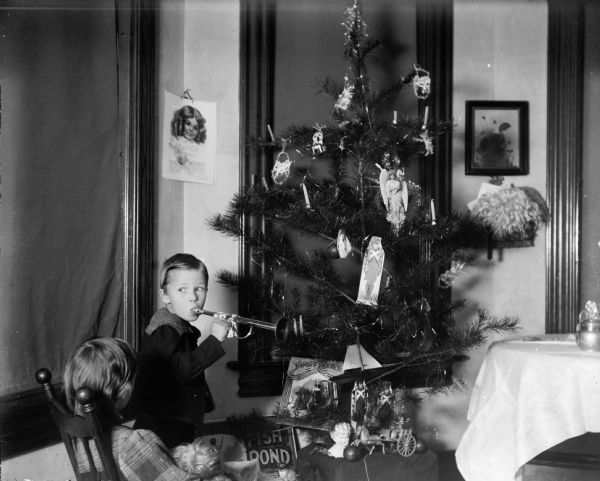Did you know the first lyrics for the song, “The Twelve Days of Christmas,” were published in London in 1780? Not only that, but in the northern counties of England, the song was often called the “Ten Days of Christmas,” as there were only ten gifts. And did you know that “The Twelve Days of Christmas has a Wisconsin connection? Meg Jones explains how the song arrived in the United States.
==
Whatever you think of the song “The Twelve Days of Christmas,”– you can thank, or blame, a Milwaukee professor for bringing the holiday carol across the Atlantic Ocean.
Even Emily Frances Brown later admitted she had no idea the song celebrating excessive gift giving would one day become so popular.
Emily Frances Brown was an English professor at Milwaukee-Downer College who organized and wrote annual Christmas productions at the all-women’s school. While browsing in a bookstore in Oxford, England she bought the sheet music, tucked it into her luggage and brought it back to Milwaukee in 1910.
That year, Brown’s students first sang about partridges in pear trees, French hens, lords a-leaping and five gold rings during the annual Christmas concert. They sang it the next year and the year after that. At some point the song spread. It’s a bit of a stretch to say it went viral – but eventually it became part of America’s collective holiday songbook.
It wasn’t unusual for European music to make its way to America via travelers such as Brown. Some came with immigrants who brought their instruments, choir books and music traditions from their home countries. And some songs came as souvenirs picked up by music-loving tourists.
The origin of “The Twelve Days of Christmas” is uncertain, but many music scholars agree the melody is French and the lyrics probably came from 18th Century England. Just why it caught on while other holiday songs did not is anyone’s guess.
The tune gets renewed attention each year when the annual estimate of the cost of each item in the song is released as a humorous economic indicator. The cost goes up and down depending on the economy, rising paychecks for dancers and drummers, a boost in the federal minimum wage for maids a-milking and volatile swan prices. In recent years the “Twelve Days of Christmas” gifts totaled a whopping $34,000 though if you exclude purchasing swans, you’ll only have to shell out around 23 Grand.
Brown herself was a bit mystified by the song’s popularity. In a 1957 letter to a former Downer student she downplayed her part in bringing the infernal song to America, saying that her share in the introduction of the “Twelve Days of Christmas” in the United States might be overestimated. She wrote that she simply picked up a printed carol in the Oxford shop, brought it home to Wisconsin and first used it at a dinner in Holton Hall in December 1910. The next year it was used for a celebration of the 100th anniversary of Charles Dickens’ birth and repeated the following December.
Brown taught at Milwaukee-Downer College for 35 years until 1945. The Downer College buildings are now part of the University of Wisconsin-Milwaukee. Downer College merged with Lawrence University in Appleton where Brown’s papers are archived. Among her memorabilia is that sheet music she bought on a jaunt to England more than a century ago.











